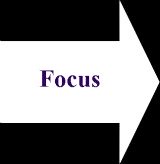Home Page | Blog | Managing | Marketing | Planning | Strategy | Sales | Service | Networking | Voice Marketing Inc.
New Product Development:
What is Product Development?
New Product Development Planning: What is product development? It's about creating, developing and marketing a new product that wins market share. It is more than new products inventions, pricing, promotion and launches. Growing your business successfully requires you to thoroughly understand your customers and deliver what they want and need.
Search This Site

A new product development plan is necessary to the process of introducing and marketing a new product or a new service.
Launching new goods and/or services involves the actual development of a new product (creating the idea, developing the process and engineering the new product).
It also involves marketing research and analysis (is there competition - is it strong or weak; is there a market need; what specific characteristics does the product need to have; and more).
What is Product Development?
Therefore, product development involves the product, the market and the business or organization.
To do it well, and minimize the risk of failure, your new product development plan must consider five phases of development: preliminary idea; idea review and assessment; business case; go or no-go; assessment after go-live. It must also consider the requirements for marketing a new product.
It's important that each phase of development has sign-off by the business owner and the management team.
Sometimes in small business that means it is an owner-only decision. If you find it difficult to make a decision between two paths (or products), you may want to take your idea to a peer review by non competing businesses that you have built through your business networking connections (something I highly recommend you do).
Five Phases of New Product Development:
The New Product Idea Or New Products Inventions:
Often a result of brainstorming. Sometimes a result of customer or supplier feedback. Sometimes brand new and innovative; sometimes an extension an existing product or product line; sometimes it can be a minor change that results in a repositioning. If an idea is of interest to you and/or your team, move it to the next phase.
The New Product Idea Preliminary Review:
Ensure that you consider what's required in marketing a new product: your marketing segmentation (for the new good or service); your target market; your potential customers (how will they benefit); your competition; product feasibility from a technical, cost/price, manufacturing perspective; profitability; sales volume (in other words do a mini-business case and sales plan for the product idea). At this stage of the product development work, I often develop a ranking scale or each of these considerations. This is the first stage of your go/no go decision. Don't waste resources (time and money) on ideas that don't score high at this level.
Consider the new product idea with a more detailed analysis:
- confirm target market and estimate market size
- who is the buyer
- analyze buyer behavior (purchase decisions, customer loyalties)
- identify product positioning and product differentiation, including features, advantages and benefits (this may change later but detail it now)
- identify how you will produce
- identify costs to market a new product: produce and launch (materials, direct labor, overhead costs, marketing and sales costs, accounting and administration costs, equipment costs, outside professional services such as lawyers, trademark agents, etc., and any other related costs)
- produce a prototype to test - focus group testing or if the new product is to be sold in an existing market, take to your customers and test with them (trial runs)
- identify what price you could charge the market - make this part of the customer trial (test the price along with the product and build a competitive pricing strategy to fit the product)
- analyze competitive reaction and build appropriate market strategies
- use customer feedback and production feedback to make product improvements/changes
Build a New Product Business Case:
- based on prototype tests (manufacture and trial), forecast costs (including projected capital expenditures) and selling price (if costs high, do a projected cash flow analysis)
- forecast sales volume in your primary, secondary, and tertiary markets
- forecast profitability, financial ratios, and break-even point
- does the new product business case point to a go or no-go decision? Assess risks of either decision. Run a sensitivity analysis on your financial projections.
Go or No-Go: Not all new product development should go ahead.
- If no-go, close the file with lessons learned for product development: what killed the project? What did customers tell you? What did your market research tell you. Is this project dead forever or should you bring it forward in a year or two? Make sure you are detailed in this part of the closure process.
- If go, plan for the new product roll-out:
- do you need additional resources: people and equipment
- do you need additional cash
- do you need to sign-up advance customers (beta customers who might get a discount for their first orders but who will provide you with valuable testing and feedback)
- do a trial production run to determine where the economies of scale are reached: sell that first-run to customers involved in the trials - they will be more involved in the process and more likely to buy
- do you need to order in extra supplies and materials
- do you need to train or retrain personnel
- do build an implementation schedule/action plan
- do build a marketing mix program (product, price, promotions and place) for the new product
Review After Initial New Product Launch:
- do a review; document lessons learned
- do look for efficiencies
- do assess unplanned-for events (customers didn't react as planned, competitors didn't react as planned). Why? And what, if anything, can we or should we do about it? (maybe the reactions were more positive than planned, but if more negative, see if a change in marketing mix strategy can help)
- do ensure that supply and delivery is on time for new products - keep on top of scheduling, production, distribution
Some of the elements in the new product development plan can happen simultaneously to speed up the development time to market.
New product management and development is a proactive market initiative; many successful companies undertake new product development to keep current in their markets.
It can be an expensive process (for example, look at the cost of retooling and redesigning cars every 2 or 3 years) but the payback is not only that you can make a profit but that you are viewed as a market leader in your industry with good, consistent product development.
If you need to raise additional cash, make sure you have a strong business financial plan to raise financing for your new product plan: ensure that you have a strong product plan, and even better, a successful new product development track record.
More-For-Small-Business Newsletter:
For more timely and regular monthly information on managing your
small business,
please subscribe here.
Additional Reading:
Return from New Product Development to Small Business Plan.
Use survey tools, research and feedback to develop your marketing research plan and marketing plan.
Read more about the definition of marketing to understand how it relates to your business growth.
Build a strong Business Financial Plan to effectively manage your business.
Or return to More For Small Business Home Page.
Subscribe to
More Business Resources E-zine
Implement Your Plan: for Results

Once you've built your plan, you need to implement it.
Developing your strategy (in the plan) is the first, necessary, step. You need to know the direction you want to go, and you need the strategy and the plan to help you get there.
But once you've built the plan, you must execute it.
There is no value in building a plan that just gathers dust.
When building your business plan, make sure that you include an action plan for the strategies, techniques and tactics.
The actions need to include who's responsible for doing what; measurements for success (such as deadlines and timelines, targets and goals, costs, etc.); and why you need to take the action (in some cases, one action needs to be accomplished before subsequent ones can be launched).
As you work through the plan, make sure that you build reporting periods into the implementation: you need to know what's going on and why something is working, or not.
Make sure to communicate progress, or lack of it, throughout the organization. And re-visit the plan when and where necessary.
This Site
Focus on Your Plan

Plan for the future: lots of business owners want to get, or keep, moving forward. Planning seems to be more of a passive activity.
However, to ensure that your business goes in the right direction and that it optimizes all its opportunities, and manages its challenges, it is important to plan.
Balance your activities against the plan: make sure that you are investing your time, and money, on the elements of your business that will help you succeed.
Measure what works, and what doesn't work, and keep your focus: use your business plan as a map to guide you in the direction you want to go.







